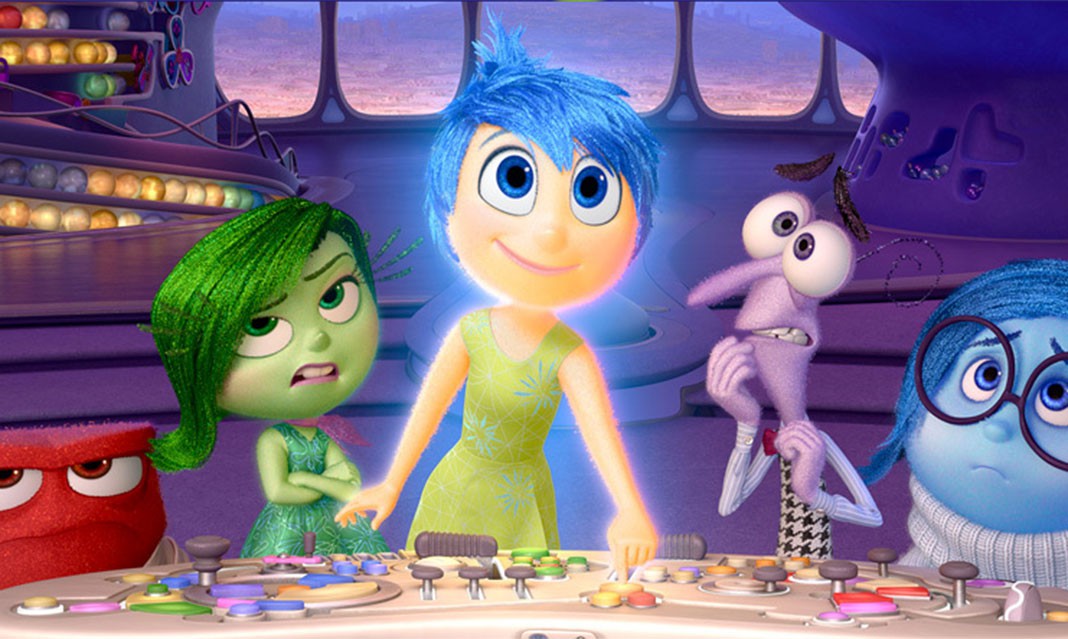This summer set the bar for next year’s summer films. With strong storylines, performances, and special effects, summer releases kept viewers well entertained. Amid all the standalone critically acclaimed films and the massively profitable franchises, I decided to tap into my inner child and go for Pixar’s Inside Out. And as far as Pixar’s track record goes, it was simply outstanding.
Inside Out revolves around a pre-teen girl named Riley and her family’s relocation from Minnesota to San Francisco. However, the central characters are not Riley or her family members, but rather the five personified manifestations of her emotions: Joy (Amy Poehler), Sadness (Phyllis Smith), Fear (Bill Hader), Anger (Lewis Black), and Disgust (Mindy Kaling). They work in Riley’s conscious mind, where they have the ability to control her actions and her memories. When they lose control over Riley, causing her to feel extreme sadness and apathy, they must collaborate and work together to understand Riley’s state and ultimately figure out their own purpose of being in her conscious mind.
From a cinematic standpoint, this film is a masterpiece. However, I wanted to better understand the film’s focus on psychology and its accuracy on the subject. So, I turned to my reliable comrade for advice—Google. Psychology Today covered Inside Out as one of its discussion topics for its articles.
According to the article, 11-year-old Riley begins showing symptoms of early Adjustment Disorder. She finds it difficult to pretend to be happy having left everything behind. The film’s director, Pete Docter, indicated a parallel with the film’s plotline and an incident from his own life. The director said that he experienced similar behavior as a child when his family relocated to another region.
Riley’s five emotions are in fact the universally validated emotions that are experienced by human beings. The use of memory in the film serves as an important aspect in plot development—memories are divided into long-term and short-term memories, which exist in the human mind. Inside Out works on a deeper level than just a summer kids’ movie. It is also an educator for both children and their parents—you can’t tell me you don’t understand your brain a little better after seeing this film, regardless of whether you took PSY100.
The film wraps up by giving us an idea of what goes on in an 11-year-old’s mind as the child inches towards puberty—and adulthood. The film also reminds us to pay attention to every emotion because that results in the proper functioning of an individual and one’s overall wellbeing. The movie teaches us that every emotion is equally important, and that by numbing sadness, a person also numbs happiness.
Inside Out is one of Pete Docter’s and Pixar’s finest works yet. So if the film is still playing in a theatre near you, grab your 3D glasses and head there as soon as you can.



